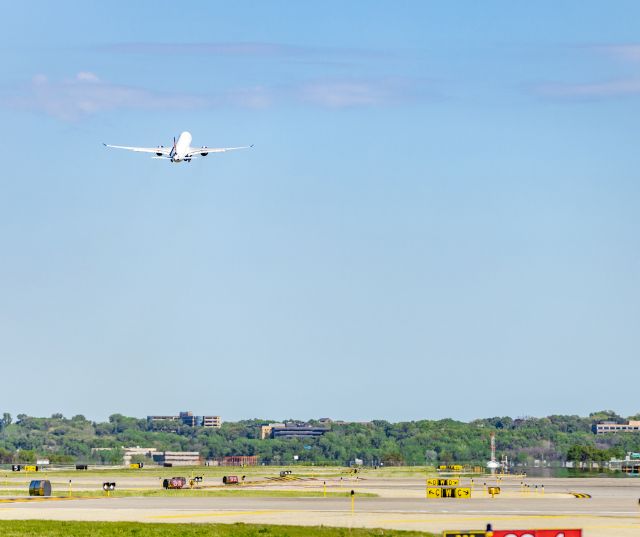MSP Airport Noise Classification System Receives U.S. Patent

Sound Data Improves Noise Program Accuracy
The system relies on a convolutional neural network—which is trained to conduct image recognition—to learn from an archive of known aircraft sound images and classify future data as aircraft or non-aircraft events.
The Metropolitan Airports Commission (MAC) has earned a U.S. patent for new sound imaging classification technology developed to support the Minneapolis-St. Paul International Airport (MSP) noise program.
Using machine learning, the Airport Noise Classification Method and System identifies sounds captured via nearly 40 sound-monitoring devices located around MSP and under common flight paths. The program classifies which sound events are aircraft, filtering out other noises common in an urban environment such as motor vehicles, lawnmowers, fireworks or weather events.
“MAC employees are committed to continuous improvement and innovation, and this project highlights our team’s drive to advance decades-long efforts of working with community stakeholders, airport users, the Federal Aviation Administration (FAA) and other government entities to address noise issues,” said Brian Ryks, CEO of the MAC, which owns and operates MSP. “This is the MAC’s first-ever patent and uses technology that will continue to strengthen our data collection in neighborhoods around the airport.”
The MAC received U.S. Patent No 11,593,610 for the system earlier this year.
The backbone of the classification system is existing technology that converts an audio file of a sound event into a picture. For instance, the sound image of Boeing 737 will have a very different image compared to a neighborhood tornado siren. The system then relies on a convolutional neural network—which is trained to conduct image recognition—to learn from an archive of known aircraft sound images and classify future data as aircraft or non-aircraft events.
“The technology helps solve a key question in the noise monitoring arena: ‘we have a sound, do we have an airplane?’” said Brad Juffer, the assistant director of terminal operations for the MAC and a co-inventor of the project. “No human or staff can efficiently decipher the thousands of inbound sound events that come through our system daily. With this classification system, we gain more reliable data to better understand overall trends impacting our airport neighbors.”
“It’s exceptional for airport operators to develop new inventions, so the U.S. patent is quite an accomplishment,” said Evan Wilson, deputy general counsel for the MAC, who led the team through a four-year patent process. “The technology will continue to be an important asset for MSP’s community relations efforts as the MAC also determines how the application could assist the broader airport industry.”
The MAC is currently in the process of registering the patent in Canada.
The Airport Noise Classification Method and System patent credits four inventors including the MAC’s Brad Juffer and Matt Baker, a GIS solution architect. They collaborated on the project with Derek Anderson, a former acoustics and data analysis coordinator for the MAC, and consultant Nicholas Heller, a University of Minnesota doctoral candidate in computer science and engineering.